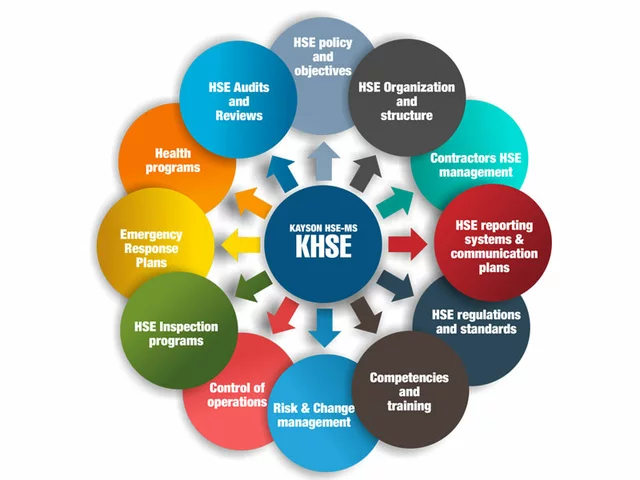
Over 1.5 billion people worldwide have some degree of hearing loss. Yet only about 34 million use hearing aids. Why? Too many assume they’re bulky, expensive, or complicated. The truth? Modern hearing aids are smaller, smarter, and more accessible than ever. Whether you’re considering your first device or upgrading an old one, understanding the types, how they’re fitted, and what’s inside them makes all the difference.
What Are the Main Types of Hearing Aids?
Hearing aids come in five main styles, each with trade-offs between power, comfort, and visibility. The right one depends on your hearing loss, ear shape, lifestyle, and budget.Behind-the-Ear (BTE) models sit behind the ear and connect to a custom earmold or dome in the canal. These are the most powerful. Brands like Phonak’s Naída Lumity L-UP are built for severe to profound hearing loss. They handle loud environments better and last 1-3 weeks on a single charge. The downside? They’re more visible. But if you have dexterity issues or need a lot of amplification, this is often the best choice.
Receiver-in-Canal (RIC) is the most popular style today. The speaker sits inside the ear canal, connected by a thin wire to the main unit behind the ear. This makes them smaller and less noticeable. Jabra Enhance Select 700 and Widex MOMENT SmartRIC are top RIC models. They offer 24+ hours of battery life, IP68 water resistance, and support for LE Audio - a new standard that improves streaming quality and reduces lag. RICs work well for mild to moderately severe loss but may not be powerful enough for profound loss.
In-the-Ear (ITE) devices fill the outer ear bowl. Signia Active Pro IX is a recent example. They’re more discreet than BTEs and pack in more features than smaller styles - like Bluetooth 5.2 and 34 hours of battery life. But they’re still visible and can be harder to handle if you have limited finger mobility. They’re ideal for people who want a balance of power and size.
Completely-in-Canal (CIC) and Invisible-in-Canal (IIC) models, like those from Eargo, fit deep inside the ear canal. They’re nearly invisible. But their tiny size limits battery life (16-20 hours), reduces power output, and restricts features like directional microphones or volume controls. These are best for mild hearing loss and people who care most about appearance.
How Are Hearing Aids Fitted?
Fitting isn’t just plugging in a device. It’s a process that ensures the sound is adjusted to your exact hearing profile. There are two main paths: prescription and over-the-counter (OTC).If you go through an audiologist, the process takes 2-3 weeks and includes at least three visits. First, a full hearing test maps your loss across frequencies. Then, the device is programmed using software that matches your audiogram. You’ll get a trial period, usually 30 days, with follow-ups to tweak settings. This is how premium brands like Phonak Audéo Infinio and Oticon Intent are fitted. It’s expensive - $3,500 to $7,500 - but gives you expert support and fine-tuning.
OTC hearing aids, available since October 2022 in the U.S., are designed for adults with mild to moderate loss. Brands like Jabra Enhance Select 700 let you self-fit using a smartphone app. The app walks you through a hearing test, then adjusts the device automatically. HearingTracker’s tests show 85% of users complete setup on the first try, in about 2.5 hours. But here’s the catch: a 2025 NIH study found 68% of self-fitters get amplification levels wrong. Too little, and you don’t hear. Too much, and it hurts. Without professional guidance, you risk under- or over-amplifying.
Costco offers a middle ground. Their Rexton Reach models cost $1,399-$2,999 and come with in-store audiology support. You get a real hearing test and adjustment - but at a lower price than private clinics.
What’s Inside Modern Amplification Technology?
Today’s hearing aids aren’t just amplifiers. They’re mini-computers with AI inside.At the core is a dual-chip system. One chip handles incoming sound, the other processes it in real time. Phonak’s Audéo Infinio reduces processing delay to just 0.4 milliseconds - compared to 5-7 ms in older models. That means your voice sounds natural, not robotic. Premium devices use 24+ processing channels to fine-tune different frequencies. If you struggle with high-pitched voices, the device boosts those specifically.
AI is now standard in top models. Starkey’s Edge AI analyzes 290 million data points per second to recognize environments - a busy street, a quiet room, a restaurant. It switches programs automatically. It can even translate speech in real time. ReSound’s new MAV technology reduces the “occlusion effect” - that plugged-up feeling when you speak - by 45%.
Connectivity has exploded. LE Audio (Bluetooth 5.2) now supports direct streaming to AirPods, Android phones, and even public audio systems via Auracast. You can listen to a TV or a lecture in a museum without extra gear. Many devices now work with Alexa or Google Assistant. You can ask, “What’s the weather?” or “Call my daughter,” without touching your phone.
Battery life varies. RICs and ITEs last 24-34 hours. CICs drop to 16-20. Some users report Eargo’s actual battery life is 20% shorter than advertised. A common tip? Keep silica gel packets in your case. Humidity drains batteries faster, especially in places like Melbourne’s damp winters.
Which Brands Lead the Market?
Six companies control 85% of the prescription hearing aid market: Sonova (Phonak, Unitron), Demant (Oticon, Bernafon), WS Audiology (Signia, Widex), GN Hearing (ReSound, Beltone), Starkey, and Rexton.Phonak dominates with 22.3% global market share. Their Audéo Infinio is praised for natural sound but costs $6,000-$7,500. Widex MOMENT SmartRIC offers 29 hours of battery and great sound, but lacks LE Audio. Oticon’s Intent miniRITE has a single microphone, which hurts performance in noise - it scores 28% worse than multi-mic rivals in signal-to-noise tests.
OTC leaders are Jabra Enhance Select 700 and Eargo. Jabra leads in user satisfaction (4.7/5 from over 1,200 reviews), thanks to its app and 24/7 chat support. Eargo wins on invisibility but loses on battery and features. Rexton Reach, sold at Costco, gets solid reviews for value but struggles in noisy settings, scoring just 2.4/5 in lab tests.
Price is the biggest divider. OTC: $199-$1,299. Telehealth: $1,000-$3,500. Premium clinic models: $3,500-$7,500+. Most users don’t realize insurance rarely covers hearing aids - even Medicare doesn’t. Some employers now offer hearing benefits. About 62% of Fortune 500 companies do, according to HR Executive Magazine.
What Users Say - Real Experiences
User feedback reveals what works and what doesn’t.On Reddit, 73% of users say LE Audio made music streaming feel lifelike again. “I haven’t enjoyed a song like this since I lost my hearing,” wrote one user. Others praise Starkey’s Auracast feature for group listening in cafes - you can tune into the conversation without asking everyone to repeat themselves.
But problems persist. Eargo users complain about battery life. Trustpilot reviews show 62% of complaints cite “less than 16 hours.” Phonak Naída Lumity users say the device is too big for small ears. And earwax? It’s the #1 cause of malfunctions. 42% of users need cleaning monthly. Most manufacturers provide a small brush and wire tool. Use them weekly. It cuts device failures by 67%.
One pro tip: if you’re new to hearing aids, give yourself 2-4 weeks to adjust. Your brain needs time to relearn how to filter sounds. Don’t expect perfection on day one. Start in quiet rooms. Then move to restaurants. Use the app to save favorite settings for different places.

What’s Next for Hearing Aids?
The future is not just about hearing - it’s about health.Starkey’s 2026 roadmap includes blood oxygen monitoring and fall detection. Imagine your hearing aid alerting emergency contacts if you stumble. ReSound’s MAV tech is just the start. Expect more sensors, more AI, and more integration with smart homes.
By 2027, 41% of buyers will choose telehealth fitting - up from 22% in 2024. That means fewer clinics, more apps, and more convenience. But it also means more risk. Without a professional, you might miss underlying issues like ear infections or sudden hearing loss that need medical attention, not just amplification.
Cybersecurity is a quiet concern. University of Michigan researchers found 12% of Bluetooth hearing aids can be intercepted. Not for spying - but for jamming or noise disruption. Always update firmware. Use strong passwords on your app.
By 2050, the WHO predicts 2.5 billion people will have hearing loss. That’s nearly 1 in 3 people. Hearing aids aren’t a luxury anymore. They’re essential tools - as important as glasses.
What Should You Do Now?
If you think you need a hearing aid:- Get a hearing test - even if you think it’s just “a little” loss. Early intervention works better.
- If your loss is mild to moderate and you’re comfortable with tech, try an OTC model like Jabra Enhance.
- If your loss is moderate to severe, or you have other health issues, see an audiologist. Don’t skip the fitting.
- Check if your employer or private insurance offers coverage.
- Use the app. Save settings. Clean your device weekly. Charge it every night.
Hearing aids today don’t just make you hear louder. They help you feel connected again. To your family. To your music. To the world.
Can I buy hearing aids without seeing a doctor?
Yes, if you’re 18 or older and have mild to moderate hearing loss. Over-the-counter (OTC) hearing aids like Jabra Enhance Select 700 are legally available without a prescription in the U.S. and many other countries. But if you have sudden hearing loss, ear pain, dizziness, or tinnitus, see a doctor first. These could be signs of a medical condition that needs treatment, not just amplification.
How long do hearing aid batteries last?
Battery life varies by style. Behind-the-Ear (BTE) and Receiver-in-Canal (RIC) models last 24-34 hours. In-the-Ear (ITE) devices can go up to 34 hours. Completely-in-Canal (CIC) and Invisible-in-Canal (IIC) models last 16-20 hours. Rechargeable models are standard now. Most take 3-4 hours to fully charge and last a full day. Avoid leaving them in humid places - use silica gel packets in your case to extend battery life.
What’s the difference between LE Audio and regular Bluetooth?
LE Audio is the next-generation Bluetooth standard for hearing aids. It uses less power, streams audio faster, and supports multi-device connections. Most importantly, it enables Auracast - a broadcast feature that lets you tune into public audio systems like in airports or theaters. Regular Bluetooth only connects one-to-one. LE Audio also improves sound quality and reduces lag, making conversations and music feel more natural.
Are expensive hearing aids worth it?
It depends. Premium models ($5,000+) have better noise reduction, more processing channels, and AI that adapts to environments automatically. If you’re in noisy places often - restaurants, meetings, public transport - yes, they’re worth it. But if you mostly stay at home or in quiet settings, a mid-tier OTC or telehealth model can work just as well. The key is proper fitting, not price.
How do I clean my hearing aids?
Clean them daily with a soft, dry cloth. Use the brush and wire tool provided by the manufacturer to remove earwax from the speaker and microphone openings. Do this once a day, preferably at night. Replace wax guards every 1-2 weeks. Store them in a dry place - use a dehumidifier or silica gel packets. Never use water, alcohol, or cleaning sprays. Moisture is the biggest killer of hearing aids.
Can hearing aids help with tinnitus?
Yes, many modern hearing aids include tinnitus masking features. They play soft, customizable sounds - like ocean waves or white noise - to distract your brain from the ringing. This doesn’t cure tinnitus, but studies show it reduces its impact in 70% of users. Look for models from Phonak, Widex, or Starkey that include dedicated tinnitus programs.
Choosing a hearing aid isn’t about picking the shiniest device. It’s about finding the right tool for your life. Whether you need power, invisibility, or smart features, the options today are better than ever. Don’t wait until you’re struggling to hear your grandchildren. Take the first step - get tested. Your ears will thank you.







My hearing aid died after 3 weeks. Guess I’ll just yell at people until they get the hint. 😅
Oh wow, another article telling me I’m not lazy for not buying a $7,000 ear gadget. Thanks, CNN. Meanwhile, my Medicare says ‘nope’ and my employer says ‘buy your own’. So I’ll just keep nodding and pretending I heard you say ‘pineapple’ instead of ‘meeting at 3’. 🇺🇸
Let me tell you something - hearing aids aren’t just about sound, they’re about dignity. I used to avoid family dinners because I’d miss half the jokes, then pretend I laughed at the right time. My RIC changed everything. I hear my granddaughter say ‘I love you’ without her having to scream it. The tech is wild - AI that knows when you’re in a noisy restaurant and turns down the clatter like a bouncer at a club. And yeah, the price sucks, but think of it like a pair of glasses for your brain. You wouldn’t skip eye exams because they cost money. Why skip hearing ones? Don’t wait until you’re missing your kid’s graduation speech. Get tested. Now. Your future self will high-five you.
The distinction between OTC and prescription devices is critical. While OTC options provide accessibility, clinical fitting remains the gold standard for moderate to severe hearing loss. Audiologists account for auditory processing anomalies, tinnitus comorbidities, and ear canal morphology that consumer apps cannot replicate. Furthermore, the NIH’s 68% misfit statistic underscores a systemic risk in self-diagnosis. Users should prioritize professional evaluation before committing to any device.
So we’ve turned hearing - a biological function - into a tech product with firmware updates and Bluetooth 5.2. Next thing you know, your hearing aid will require a subscription to ‘Premium Silence Mode’ and charge you $9.99/month to turn off your neighbor’s dog barking. At least with glasses, you don’t need an app to tell you the sky is blue. But hey, if my hearing aid can also monitor my blood oxygen and call 911 when I fall, maybe I’ll stop being mad about the price. Still… I miss the days when ‘hearing aid’ meant a little plastic box with a dial and a battery you changed once a week. Simpler. Less likely to get hacked by some teenager in Belarus.
People talk about battery life like it’s a competition, but nobody mentions how much earwax ruins everything. I had my Eargo replaced twice in a year because I forgot to clean it. Then I bought a $12 wax guard kit from Amazon and now it lasts 3 months. Seriously - brush it every night. Don’t wait until it sounds like you’re underwater. And yeah, silica gel packets? Genius. I keep one in my sock drawer now. My hearing aids and my socks are both dry. Win-win.
Let’s be real - hearing aids are just expensive noise-canceling headphones with a side of medical fraud. You don’t need AI to hear your wife say ‘where are my keys?’ You need to stop ignoring her. Also, ‘LE Audio’? Sounds like a startup name from 2017. And why are we all so obsessed with invisibility? I’m not ashamed of my hearing aid. I wear it like a badge. It’s not a secret. It’s not a fashion accessory. It’s a tool. And if you’re spending $6K to hide it? You’re doing it wrong.
Imagine a world where your hearing aid doesn’t just amplify sound - it translates your neighbor’s mumbled complaint about the trash day into a polite reminder to take out the bins. Where your device knows you’re anxious in crowds and gently lowers the bass so your panic doesn’t spike. Where it syncs with your smart fridge and whispers, ‘You’re out of milk.’ That’s not sci-fi - that’s 2027. And honestly? I’m weirdly excited. Hearing aids are becoming the first wearable that doesn’t just track your steps, but your humanity. We’re not just fixing ears anymore. We’re rebuilding connection. And that? That’s beautiful.
I lost my hearing slowly, and I didn’t realize how much I was missing until I got my first device. My mom’s voice - she used to sing to me when I was sick - sounded different. Not louder. Just… clearer. Like a song I’d forgotten the lyrics to. I cried. Not because it was loud. Because it was *there*. If you’re hesitating? Just try. Even a cheap OTC one. Don’t wait until you’re isolated. You don’t have to be ‘fixed’. You just have to be heard again.
Oh, so now hearing loss is a ‘public health crisis’? Funny, because when I asked my insurance for coverage, they said ‘you’re not disabled enough’. And yet, here we are - 2.5 billion people by 2050? Cool. Meanwhile, my audiologist charges $400 just to look at my ear canal. So let me get this straight: the solution to a global epidemic is… more expensive gadgets? And we’re supposed to be grateful because they’re ‘smarter’? I’ll stick to lip reading and sarcasm. At least those are free.
just got my jabra and omg it’s like hearing music for the first time since 2015. i cried in the grocery store listening to the lady sing in the produce aisle. i didn’t even know i was missing that. also, the app is kinda glitchy but i love it. also i think my hearing aid just called me ‘dude’ in alexa mode. i’m not mad. i’m impressed. 🤖❤️
‘LE Audio enables Auracast’? Sounds like a marketing term made by someone who’s never been to a coffee shop. I tried it. My hearing aid picked up a guy’s podcast about cryptocurrency while I was trying to hear my friend say ‘I’m sorry about your cat’. I didn’t hear the cat. I heard ‘Bitcoin will hit $1M’. So thanks, tech. Now I’m traumatized.
Important note: Always update firmware. A 2023 University of Michigan study found 12% of Bluetooth hearing aids are vulnerable to signal interference - not for spying, but for disruption. A malicious actor could, theoretically, flood your device with white noise in a public space. While this is rare, it underscores the need for secure app passwords and regular updates. Also, clean your devices weekly. Wax buildup is the #1 cause of failure. Use only manufacturer-recommended tools. Do not use Q-tips. Ever.
Let’s be honest - the real reason hearing aids are so expensive is because the market is a cartel. Six companies. 85% share. They don’t compete on price. They compete on branding. Phonak? That’s not a hearing aid. It’s a status symbol for people who want to say, ‘I paid $7K to hear my cat sneeze.’ Meanwhile, my cousin in Mexico bought a $200 device from Alibaba and hears just fine. The tech isn’t that different. The markup is. We’re being sold a dream. And the dream? It’s just a tiny computer with a battery. But hey - if you want to pay $6K for the privilege of being ‘modern’, go ahead. I’ll be over here, using my ears and a little patience.